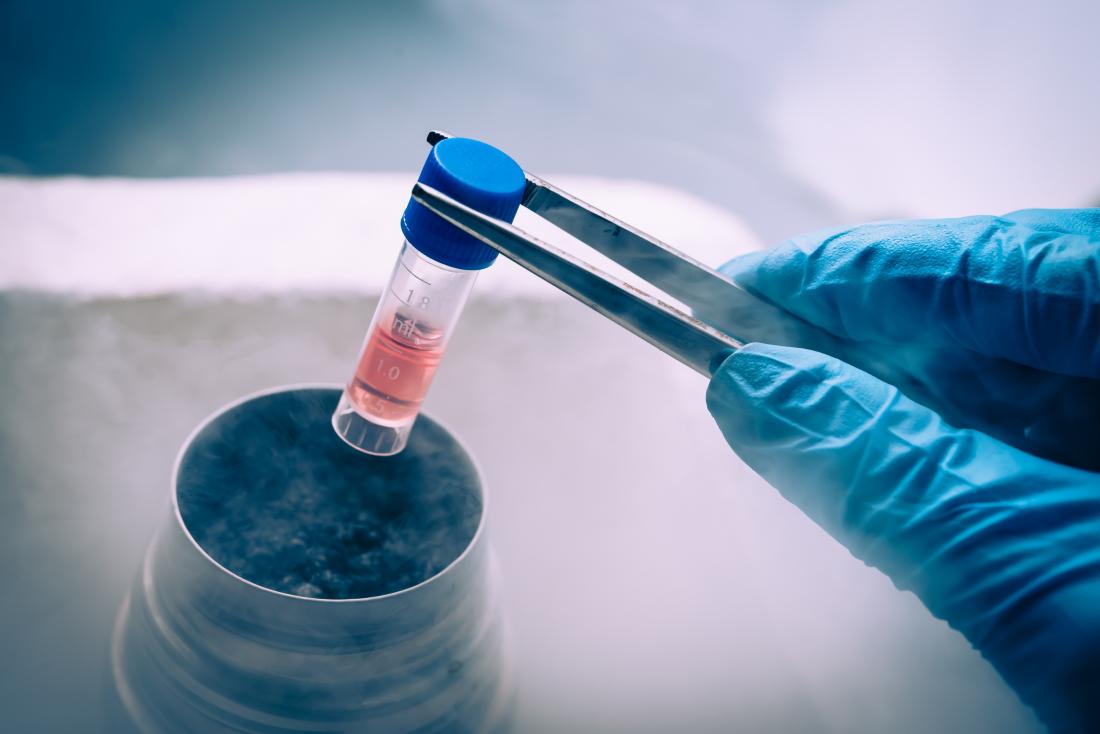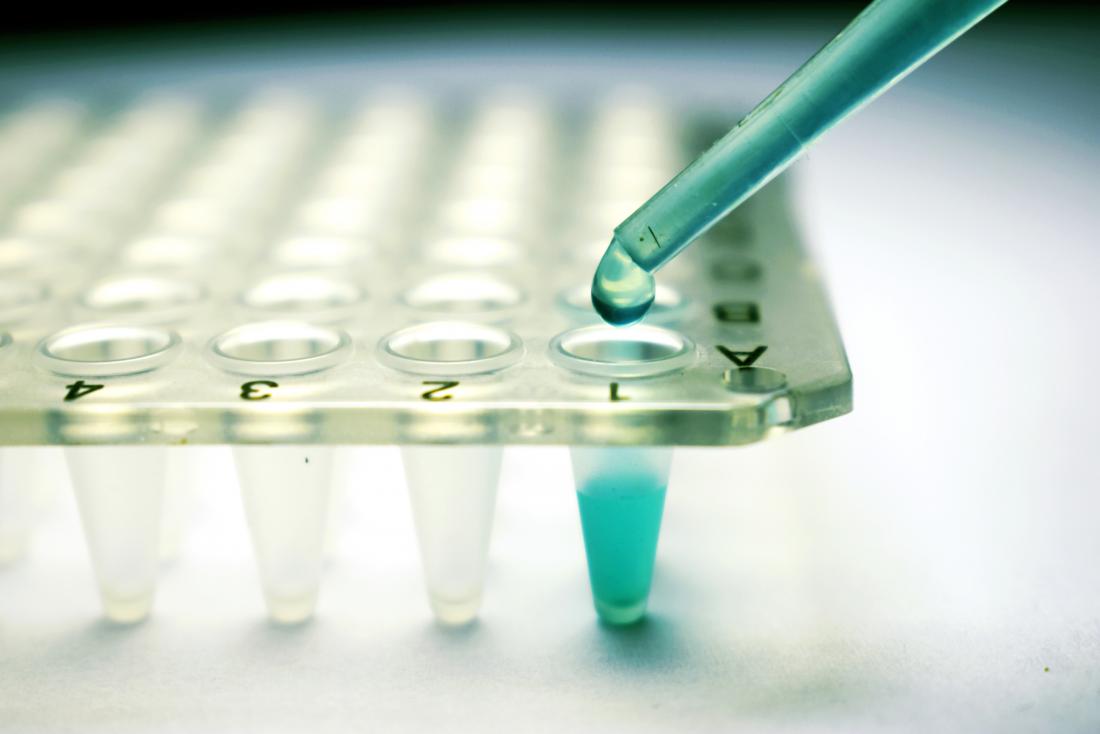Stem cells are a type of cell that can develop into many other types of cell. Stem cells can also renew themselves by dividing, even after they have been inactive for a long time.
The human body requires many different types of cell to function, but it does not produce each cell type fully formed and ready to use. Instead, it produces stem cells that have a wide range of possible functions. However, stem cells need to become a specific cell type to be useful.
When a stem cell divides, the new cells may either become another stem cell or a specific cell, such as a blood cell, a brain cell, or a muscle cell.
Scientists call a stem cell an undifferentiated cell because it can become any cell. In contrast, a blood cell, for example, is a ‘differentiated’ cell, because it is already a specific kind of cell.
Stem cells in therapy

Stem cells may provide the key to regenerative medicine, in which the body heals itself.
In some tissues, stem cells play an essential role in regeneration, as they can divide easily to replace dead cells.
Scientists believe that knowing how stem cells work may lead to possible treatments for conditions, such as diabetes and heart disease.
For instance, if someone’s heart contains damaged tissue, doctors might be able to stimulate healthy tissue to grow by transplanting laboratory-grown stem cells into the person’s heart. This could cause the heart tissue to renew itself.
Researchers on a small-scale study published in the Journal of Cardiovascular Translational Research tested this method.
The results showed a 40 percent reduction of the size of scarred heart tissue caused by heart attacks when doctors transplanted stem cells to the damaged area.
Doctors have always considered this kind of scarring permanent and untreatable.
However, this small study involved only 11 participants. This makes it difficult to tell whether the improvement in heart function resulted from the transplantation of stem cells or whether it was due to something else.
For example, all of the transplants took place while the individuals were undergoing heart bypass surgery, so it is possible that the improvement in heart function was due to the bypass rather than the stem cell treatment.
To investigate further, the researchers plan to do another study. This study will include a control group of people with heart failure who undergo bypass surgery but who do not receive the stem cell treatment.
Another investigation, published in Nature Communications in 2016, has suggested that stem cell therapies could be the basis of personalized diabetes treatment.
In mice and laboratory-grown cultures, researchers successfully produced insulin-secreting cells from stem cells derived from the skin of people with type 1 diabetes.
Jeffrey R. Millman, assistant professor of medicine and biomedical engineering at Washington University School of Medicine and first author, says:
“In theory, if we could replace the damaged cells in these individuals with new pancreatic beta cells — whose primary function is to store and release insulin to control blood glucose — patients with type 1 diabetes wouldn’t need insulin shots anymore.”
Jeffrey R. Millman
Millman hopes that these stem cell-derived beta cells could be ready for research in humans within 3 to 5 years.
“What we’re envisioning is an outpatient procedure in which some sort of device filled with the cells would be placed just beneath the skin,” he said.
Stem cells could have vast potential in developing new therapies.
Stem cells in drug development

Scientists are using stem*cells to develop and test new drugs.
One way that scientists use stem cells at the moment is in developing and testing new drugs.
The type of stem*cells that scientists commonly use for this purpose are called induced pluripotent stem cells.
These are cells that have already undergone differentiation, but which scientists have genetically “reprogrammed” using viruses, so they can divide and become any cell. In this way, they act like undifferentiated stem cells.
Scientists can grow differentiated cells from these pluripotent stem cells to resemble, for instance, cancer cells. Creating these cells means that scientists can use them to test anti-cancer drugs.
Researchers are already making a wide variety of cancer cells using this method. However, because they cannot yet create cells that mimic cancer cells in a controlled way, it is not always possible to replicate the results precisely.
Do current stem-cell therapies work?
In recent years, clinics have opened that provide stem cell treatments.
A 2016 study published in Cell Stem Cell counted 570 of these clinics in the United States alone. They offer stem cell-based therapies for disorders ranging from sports injuries to cancer.
However, stem cell therapies are still mostly theoretical rather than evidence-based.
Very few stem cell treatments have even reached the earliest phase of a clinical trial. Scientists are carrying out most of the current research in mice or a petri dish.
Despite this, the U.S. Food and Drug Administration (FDA) allow clinics to inject people with their own stem*cells, as long as the cells are intended to perform only their normal function, according to Cell Stem Cell.
Where do stem cells come from?
Scientists can harvest stem*cells in different ways.
Embryonic stem*cells come from an embryo that is just a few days old.
Scientists can extract adult stem-cells from different types of tissue, including the brain, bone marrow, blood vessels, skeletal muscle, skin, teeth, the gut, the liver, among others.
Amniotic fluid contains stem*cells. Many women opt for an amniocentesis test that checks for congenital disabilities before the child is born. If the doctor keeps the fluid, they could use it in the future to treat other conditions either during gestation or after birth.
Induced pluripotent stem*cells (iPS cells) are cells that scientists can reprogram to act as stem*cells, for use in regenerative medicine.
After collecting the stem*cells, scientists usually store them in liquid nitrogen for future use.
Ethical issues
Historically, the use of stem*cells in medical research has been controversial.
This is because when the therapeutic use of stem*cells first came to the public’s attention in the late 1990s, scientists were deriving human stem-cells from embryos.
Many people disagree with using human embryonic cells for medical research because extracting the stem means destroying the embryo.
This creates complex issues, as people have different beliefs about what constitutes the start of human life.
For some people, life starts when a baby is born, or when an embryo develops into a fetus. Others believe that human life begins at conception, so an embryo has the same moral status and rights as a human adult or child.
President George W. Bush had strong, pro-life religious views, and he banned funding for human stem cell research in 2001.
However, President Obama’s administration allowed for a partial rolling back of these research restrictions.
However, by 2006, scientists had already started using pluripotent stem-cells. Scientists do not derive these stem-cells from embryonic stem-cells. As a result, this technique does not have the same ethical concerns.
With this and other recent advances in stem cell technology, attitudes toward stem cell research are slowly beginning to change.
Current research
Stem cell research is helping scientists to understand how an organism develops from a single cell, and how healthy cells come to replace defective cells in people and animals.
Understanding cancer
Many severe medical conditions that occur in humans, such as cancer and congenital disabilities, happen because cells divide abnormally.
A better understanding of stem-cells can provide insight into how these diseases arise and possible treatment options.
Regenerative medicine

Stem*cells have shown promise in many areas of health, from reducing scarring on the heart to dental repair.
In June 2016, two researchers took second prize in the materials category of the United Kingdom’s Royal Society of Chemistry’s emerging technology competition for creating a synthetic biomaterial that stimulates stem*cells native to a person’s own teeth.
The researchers believe that this material will replace fillings, as the stem*cells would prompt the damaged teeth to heal themselves.
Although much more research is necessary before stem cell therapies can become part of regular medical practice, the science around stem*cells is developing all the time.
In almost every therapy area, doctors hope that stem cell technology will revolutionize therapeutic norms and introduce at least a new standard of personalized treatment, and maybe even self-healing bodies.
When that might happen, no one is quite ready to say.